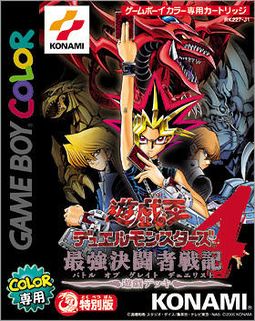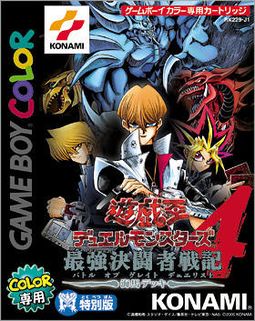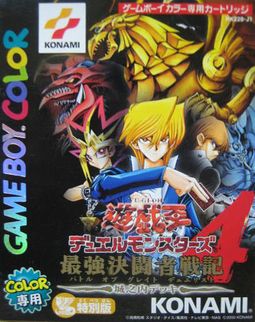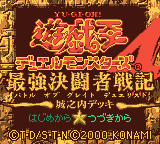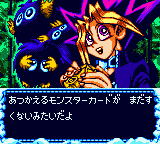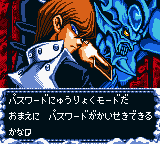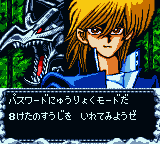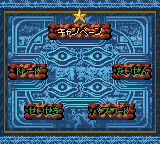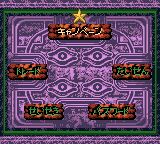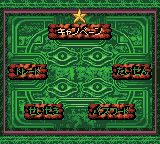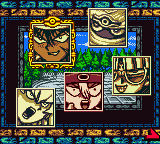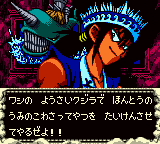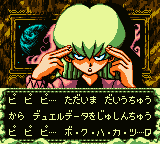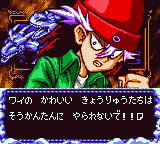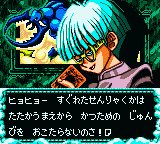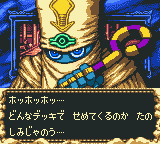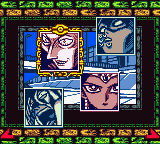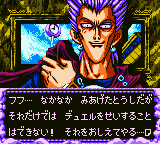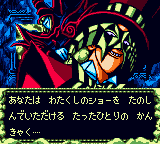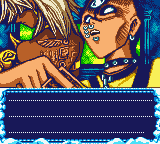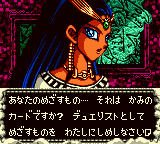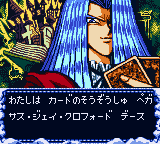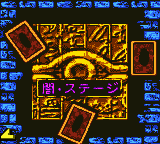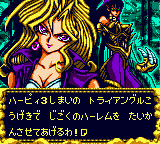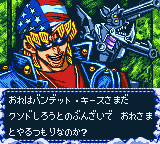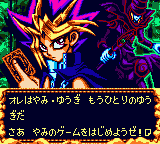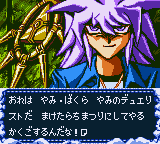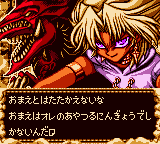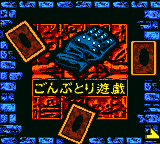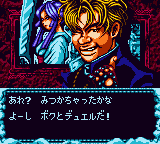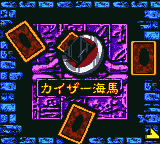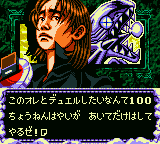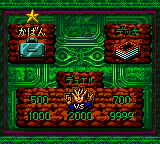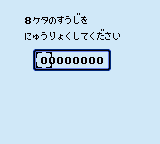Yu-Gi-Oh! Duel Monsters 4: Battle of Great Duelist
It has been suggested that this article be renamed to Yu-Gi-Oh! Duel Monsters 4: Battle of Great Duelists. (discuss) The reason given was: https://www.konami.com/games/eu/en/topics/17742/ |
| Names | |||||||||||
|---|---|---|---|---|---|---|---|---|---|---|---|
| English | Yu-Gi-Oh! Duel Monsters 4: Battle of Great Duelist | ||||||||||
| |||||||||||
| Development | |||||||||||
| Platform | Game Boy Color | ||||||||||
| Languages | Japanese | ||||||||||
| Developer | Konami | ||||||||||
| Publisher | Konami | ||||||||||
| Release dates | |||||||||||
| Japanese | December 7, 2000 | ||||||||||
| Series | |||||||||||
| Series | Duel Monsters | ||||||||||
| Previous | Dark Duel Stories | ||||||||||
| Next | Duel Monsters 5: Expert 1 | ||||||||||
| Links | |||||||||||
| |||||||||||
Yu-Gi-Oh! Duel Monsters 4: Battle of Great Duelist (
Each of the god cards are usable after completing the game, but they can only be obtained from a different version by trading:
- Slifer the Sky Dragon can be used in the Yugi Deck version, obtained in the Kaiba Deck or Joey Deck version by defeating Yami Yugi.
- Obelisk the Tormentor can be used in the Kaiba Deck version, obtained in the Yugi Deck or Joey Deck version by defeating Yami Bakura.
- The Winged Dragon of Ra can be used in the Joey Deck version, obtained in the Yugi Deck or Kaiba Deck version by defeating Marik Ishtar.
Contents
Changes from Duel Monsters III[edit]
A number of things were changed from Yu-Gi-Oh! Duel Monsters III: Tri-Holy God Advent:
General
- Three versions of the game were released simultaneously; Yugi Deck, Kaiba Deck and Joey Deck. Each version has access to features not available in all three.
- The ability to name the player has been removed, as the player plays as the version's title character and assumes their name.
- Card construction has been removed. However a few of the cards which could be formed by construction are available as regular cards.
Campaign
- A stage to the left of the first stage can be unlocked by entering Passwords for either of its opponents; Yugi Gonbutori and Kaiser Umiuma.
- The opponent Strings is added. Bandit Keith and Maximillion Pegasus, who were present in Duel Monsters 2, but not Duel Monsters 3 have been re-added.
- Tristan, Joey, Yugi, Kaiba, Seto, Heishin, DarkNite/Nitemare and Shadi are not available as opponents.
- The stages certain opponents appear in are changed.
- CPU opponents' Decks and cards dropped are changed.
- CPU opponents are now able to activate monster effects.
Rules
- Some cards can only be used in specific versions of the game. e.g. "B.eye White Dragon" can only be used in the Kaiba Deck version.
- Some cards can only be used after beating the game. (i.e. after defeating Maximillion Pegasus five times.)
- 3 offerings are required to Summon Level 9 or higher monsters. While previous games featured Level 9 and higher monsters, legitimate copies could not be included in a Deck. If a player managed to include a copy in their Deck in a previous game, only two offerings would have been required to Summon it.
- The Graveyard mechanic is introduced. In previous games, it was not possible to interact with cards after they had been destroyed or used.
- Trap Cards remain on the field until they are activated. Previously, they would disappear if they were not triggered on the opponent's next turn.
- The initial Deck Volume is changed from 400 to 1600.
- The initial Duelist Level is changed from 15 to 72.
Cards
- The Levels of many cards are changed, with Levels generally being based on ATK and DEF. (See stat calculations below.)
- The Deck Cost of monsters is changed. It is now exponentially proportional to whichever is higher of the monster's ATK and DEF, with the Deck Cost resetting when the higher stat reaches an amount that requires an increased number of Tributes.
- "Petit Moth", its evolutions and "Multiply" are now Limited.
- A number of cards have their artworks changed.
Cards[edit]
Yu-Gi-Oh! Duel Monsters 4: Battle of Great Duelist contains 900 cards, including:
- The 800 standard cards, which appeared in Duel Monsters III
- 7 cards, which appeared in Duel Monsters III as constructed cards, appear in this game as regular cards
- 33 new cards from the manga, up until Duel 188: "Combine Your Power!"
- 60 other cards
Player characters[edit]
Game options[edit]
The following options are available from the main menu:
- Campaign (キャンペーン kyanpēn): the game's story mode. Face AI opponents.
- Versus (たいせん taisen): battle other players, using the Game Link Cable
- Password (パスワード pasuwādo): unlock items by entering a password
- Records (せいせき seiseki): statistics and other information about the player
- Trade (トレード torēdo): trade with other players via the Game Link Cable.
There are two debugging options, hidden from normal gameplay.
- Play sound
- View scene
Campaign[edit]
Each opponent in a stage must be defeated 5 times to unlock the next stage. After this, opponents can continue to be battled for more points and card drops.
The first stage is Domino Park. The second stage is the bridge underpass. The third stage, is the boss, Maximillion Pegasus. After defeating Pegasus five times, the player is given the password for the ending credits and an additional Dark Stage appears, with Mai Valentine as an opponent. The opponent for this stage can be changed with a password.
The secret stage can be unlocked by entering the password for one of its two characters. It is found by navigating left from the first stage. Like the Dark Stage, only one opponent will be available at a time and the opponent can be changed with a password.
| Stage | Opponents |
|---|---|
|
|
|
|
|
|
|
|
|
|
|
|
|
|
|
|
|
|
Versus[edit]
Players can battle other players with a copy of Yu-Gi-Oh! Duel Monsters 4 using the Game Link Cable via the versus menu. The Deck can be altered, and a Deck Capacity limit can be chosen, on this screen. Allowed limits are 500, 700, 1000, 2000 and 9999.
Password[edit]
Cards can be added to the player's chest in the password menu, by entering eight-digit passwords from OCG/TCG cards. There are a few non-card passwords used to unlock other features.
| Password | Action |
|---|---|
| 17232574 | Grandpa gives the player an extra card after each Duel |
| 71837829 | Change the Dark Stage opponent to Mai Valentine |
| 45442120 | Change the Dark Stage opponent to Bandit Keith |
| 82659417 | Change the Dark Stage opponent to Yami Bakura, except in Kaiba Deck |
| 45565702 | Change the Dark Stage opponent to Marik Ishtar, except in Joey Deck |
| 18054115 | Change the Dark Stage opponent to Yami Yugi, except in Yugi Deck |
| 19170603 | Change the Secret Stage opponent to Yugi Gonbutori |
| 83771069 | Change the Secret Stage opponent to Kaiser Umiuma |
| 44220672 | View the credits |
Records[edit]
The records screen contains the player's communication battle statistics, Duelist Level, Deck Volume and statistics for campaign-mode opponents.
Trade[edit]
From the trade menu, the player can trade cards with Yu-Gi-Oh! Duel Monsters, Yu-Gi-Oh! Duel Monsters II: Dark duel Stories, Yu-Gi-Oh! Duel Monsters III: Tri-Holy God Advent and other copies of Yu-Gi-Oh! Duel Monsters 4: Battle of Great Duelist, using the Game Link Cable.
Debugging screens[edit]
The debugging screens are unavailable during normal gameplay. They can be enabled by altering the ROM data. When enabled, their options are not visible on screen, but the player can access them by continuing to move the cursor past the campaign or trade options, which are normally the first and last options in the list.
The two debugging options are to play a sound or to view a screen.
Play sound: The user may enter a number to play a sound.
View screen: The user may enter a number to show a certain scene. All characters shown this way will have "1234567890123456 0123456789012345678" as their dialogue. Despite not being included in the final version of the game, Shadi's graphic from Yu-Gi-Oh! Dark Duel Stories exists in the game's code and can be accessed this way.
Obtaining cards[edit]
Starter Deck[edit]
The player begins the game with a fixed Deck of 40 cards.
Opponent drops[edit]
When an opponent is defeated in campaign mode, the player is given a card.
Each opponent has a different list of cards the player can get for beating them, with each card on the list having an assigned probability of randomly obtaining it. See Mako Tsunami (Duel Monsters 4) § Drops for example.
Trading[edit]
From the trade menu, the player can trade cards with Yu-Gi-Oh! Duel Monsters, Yu-Gi-Oh! Duel Monsters II: Dark duel Stories, Yu-Gi-Oh! Duel Monsters III: Tri-Holy God Advent and other copies of Yu-Gi-Oh! Duel Monsters 4: Battle of Great Duelist, using the Game Link Cable.
Passwords[edit]
From the password menu, the player can obtain cards by entering eight-digit passwords from OCG/TCG cards.
Cards from Grandpa[edit]
By entering 17232574 into the password menu, Solomon Muto will appear after each Duel to award the player a card.
Temporarily obtaining cards[edit]
Fusion[edit]
Fusions are attempted during Duels by play a card from the hand on top of a monster on the field or hand. If successful, the two cards will merge into one.
Ritual Summon[edit]
Evolution[edit]
#278 "Petit Moth" and its stages evolve into other cards after being on the field for one turn, in the order shown below.
#278 "Petit Moth" → #056 "Larvae Moth" → #072 "Cocoon of Evolutio" → #057 "Great Moth" → #067 "Perfectly Ultimate"
Card effects[edit]
Some cards have effects that allow the player to play certain cards, which are not in their Deck.
| Effect | Summoned card | ||
|---|---|---|---|
| 016 | Time Wizard | 069 | Thousand Dragon |
| 117 | Spirit of the Book | 486 | Boo Koo |
| 140 | Toad Master | 549 | Frog The Jam |
| 224 | Trap Master | 685 | Acid Trap Hole |
Rules[edit]
The game does not use rules from the Yu-Gi-Oh! Official Card Game. It uses the rules from its predecessor Yu-Gi-Oh! Dark Duel Stories and makes a number of modifications and updates.
Deck construction[edit]
- A player's Deck must contain exactly 40 cards.
- A Deck can have up to 3 copies of the same card or 1 copy in the case of Limited cards.
- Some cards can only be added to the players Deck in certain versions of the game.
- Some cards can only be used in the post-game. i.e. after the player has defeated Maximillion Pegasus five times.
- Each card's Deck Cost must be equal to or lower than the player's Duelist Level.
- The sum of each card's Deck Cost must be below a certain Deck Volume.
- In "campaign" mode, the player has a set Deck Volume, which they can increase through different methods.
- In "versus" battles, players choose a Deck Volume that they must both obey (500, 700, 1000, 2000 or 9999).
Although each game has cards that cannot be included in the Deck, some of those cards can still be used by acquiring them through temporary means. This is the only way of using "Thousand-eyes Rest" and the Ritual Monsters, which are otherwise unusable in all three games.
Stat calculations[edit]
Deck Volume[edit]
The player's initial Deck Volume is 1600. It can be altered using these methods, until it reaches the maximum of 9999.
| Difference | Method |
|---|---|
| +2 | Trade |
| +5 | Play a game in campaign mode |
| +10 | Lose a communication battle |
| +20 | Win a communication battle |
Duelist Level[edit]
The player's Duelist Level is equal to (Deck Volume − 1600) ÷ 3 + 72, rounded down and capped at 255. New games start with a Duelist Level of 72; the cap of 255 is reached with a Deck Volume of 2149. If Deck Volume could be decreased, the Duelist Level would hit 0 when the Deck Volume was decreased to 1384.
| Duelist Level | Deck Volume | Notes |
|---|---|---|
| -461 | 0 | Lowest possible Duelist Level, if Deck Volume could be decreased |
| -428 | 100 | |
| -394 | 200 | |
| -361 | 300 | |
| -328 | 400 | |
| -294 | 500 | |
| -128 | 1000 | |
| 0 | 1384 | Duelist Level = 0, if Deck Volume could be decreased |
| 72 | 1600 | Starting Duelist Level and Deck Volume |
| 205 | 2000 | |
| 255 | 2149 | Duelist Level cap |
| 538 | 3000 | |
| 872 | 4000 | |
| 1205 | 5000 | |
| 2871 | 9999 | Duelist Level at Deck Volume cap, if Duelist Level was not capped |
Monster Level[edit]
Although each card has its Level printed on it, the Level can be determined based on ATK and DEF, both of which must be lower than the card's Level × 350. For example, a Level 7 monster's ATK and DEF must both be lower than 7 × 350 = 2450. A Level 8 must be lower than 8 × 350 = <2800. "D.Magician" has 2500 ATK and 2100 DEF. Since one of its stats is too high to be Level 7, it is Level 8.
These rules no longer apply at Level 11, as it is the highest standard Level in the game. e.g. "B.eye Ultra Dragon" and "Valkyrion the Magna Warrior" are Level 11 and have stats equal to or higher than 3850 (11 × 350).
12 is a special Level, used only by the Egyptian God cards.
| Level | Maximum stat |
|---|---|
| 1 | 349 |
| 2 | 699 |
| 3 | 1049 |
| 4 | 1399 |
| 5 | 1749 |
| 6 | 2099 |
| 7 | 2449 |
| 8 | 2799 |
| 9 | 3149 |
| 10 | 3499 |
| 11 | n/a |
| 12 | n/a |
Deck Cost[edit]
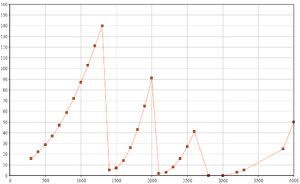
The Deck Cost of a Monster Card depends on the number of Tributes required to Summon it and is exponentially proportional to the whichever is higher out of its ATK and DEF.
Certain monsters intended to be Summoned by other means, such as Ritual Summon, are given a Deck Cost of 255 to discourage Summoning them normally.
All Ritual Cards have a Deck Cost of 0. Spell and Trap Cards have a Deck Cost proportional to how powerful they were perceived to be.
Duels[edit]
- Each player starts with 8000 LP.
- Each player starts with five cards in their hand.
- The player draws one card at the start of each turn, unless their hand already contains five cards.
Playing cards
- Players can Normal Summon one monster from their hand per turn. They may Summon a monster into one of the five available zones.
- Level 1 to 4 monsters can be Summoned freely.
- In order to Summon a Level 5 or 6 monster, they must first offer a monster that is already on the field as a Tribute.
- In order to Summon a Level 7 or 8 monster, they must offer two monsters that are already on the field.
- In order to Summon a Level 9 or higher monster, they must offer three monsters that are already on the field.
- If a Summoned monster has an effect, it can be activated.
- If the player attempts to place the monster into a zone occupied by another monster, the game will attempt to fuse the monsters.
- If the Fusion is valid, a new monster will be Summoned into the zone. This will not be considered the player's Normal Summon, so they can Summon another monster the same turn they conduct a Fusion Summon.
- If the Fusion is invalid, the second monster will replace the first.
- The player may fuse monsters while they are in their hand. However the Fusion Monster will remain in their hand and will require Tributes to Summon, if it is Level 5 or higher.
- Multiple Magic Cards can be activated per turn. Magic Cards are immediately activated when played and have some effect on gameplay.
- One Trap Card can be placed face-down on the field per turn. It will activate automatically when a certain condition, specified on the card, is met.
- Multiple Ritual Cards can be activated per turn. A Ritual Card sacrifices three monsters to Summon a new monster. Depending on the Ritual Card, one or three of the sacrifices must be specific monsters. If the the necessary sacrifices are not supplied, the Ritual Card has no effect.
Battling
- Each turn, a player can put each of their monsters in either Attack or Defense Position.
- If a monster is put in Attack Position, it can attack monsters on the opponent's side of the field. If there are none, they may attack the opponent directly.
- When a monster attacks a player directly, the monster's ATK is deducted from the LP of the attacked player.
- When a monster attacks an Attack Position monster, the monster with lower ATK is destroyed and the difference is deducted from the LP of the controller of the destroyed monster. If both monsters have the same ATK, they are both destroyed.
- When a monster attacks a Defense Position monster: If the attacking monster's ATK is higher than the defending monster's DEF, the defending monster is destroyed. If the attacking monster's ATK is equal to or lower than the DEF of the defending monster, the difference is deducted from the LP of the controller of the attacking monster, and neither monster is destroyed.
- However, when a monster attacks a monster with an opposing Alignment, the monster with the inferior Alignment is instantly destroyed and the controller of the monster with the superior Alignment will not lose LP.
- Fusion Monsters cannot attack the turn that they are Fusion Summoned.
Winning
A Duel is won when any of these conditions are met:
- The opponent's LP are reduced to 0.
- The opponent cannot draw a card.
- The player has all five "Exodia" pieces in their hand.
Limited cards[edit]
The following cards are Limited, meaning only a single copy can be included in the player's Deck.
- #018: "R Leg of Forbidden"
- #019: "L Leg of Forbidden"
- #020: "R Arm of Forbidden"
- #021: "L Arm of Forbidden"
- #022: "Exod. of Forbidden"
- #056: "Larvae Moth"
- #057: "Great Moth"
- #067: "Perfectly Ultimate"
- #072: "Cocoon of Evolutio"
- #278: "Petit Moth"
- #336: "Dark Hole"
- #337: "Raigeki"
- #348: "Swords of Revealin"
- #657: "Megamorph"
- #781: "Brain Control"
- #784: "Change of Heart"
- #785: "Multiply"
- #789: "Pot of Greed"
- #832: "Obelisk the Tormentor"
- #833: "Slifer the Sky Dragon"
- #834: "The Winged Dragon of Ra"
- #894: "Heavy Storm"
Version differences[edit]
The game has three versions; Yugi Deck, Kaiba Deck and Joey Deck. The differences between each game include:
- Many cards can only be used in certain versions, e.g. "B.eye White Dragon" can only be used in Kaiba Deck. Some cards are only usable in a given version after that version's campaign has been beaten.
- A different Egyptian God can be obtained in each version. However, the God is not usable in the same version it is obtained in; it must be traded to a different version to be used.
- The title screen and main menu are a different color in each game. The title screens are colored according to the Egyptian God featured in the game; Yugi Deck has a red title screen, Kaiba Deck a blue screen, and Joey Deck a yellow screen. The main menu is colored complementarily: Yugi Deck has a blue screen, Kaiba Deck has a purple screen, and Joey Deck has a green screen.
- The game's title character appears at the password screen and in other messages.
- Different promotional cards come with each version of the game.
Glitches[edit]
- The game incorrectly initializes ATK/DEF values for the CPU's field, which can cause "Beckon to Darkness" to target the incorrect monster or an empty Monster Zone.
Promotional cards[edit]
Three cards were available as pre-order bonuses, with each game having a distinct pre-order bonus.
Each copy of the game came with three random promotional cards from a pool of five. Each of the three versions had a separate pool of five cards.
Each of the two guide books came with a promotional card.
| Pre-order | Yugi Deck | Kaiba Deck | Joey Deck | |||
|---|---|---|---|---|---|---|
| G4-01 | "Slifer the Sky Dragon" | G4-02 | "Obelisk the Tormentor" | G4-03 | "The Winged Dragon of Ra" | |
| Bundled | Yugi Deck | Kaiba Deck | Joey Deck | |||
| G4-04 | "Windstorm of Etaqua" | G4-05 | "Aqua Chorus" | G4-06 | "Sebek's Blessing" | |
| G4-07 | "Anti-Spell Fragrance" | G4-08 | "Riryoku" | G4-09 | "Sword of Dragon's Soul" | |
| G4-10 | "Mesmeric Control" | G4-11 | "Seal of the Ancients" | G4-12 | "Negate Attack" | |
| G4-13 | "Gamma The Magnet Warrior" | G4-14 | "Valkyrion the Magna Warrior" | G4-15 | "Magical Arm Shield" | |
| G4-18 | "Ring of Destruction" | G4-17 | "Vorse Raider" | G4-16 | "Alligator's Sword Dragon" | |
| Guide | Volume 1 | Volume 2 | ||
|---|---|---|---|---|
| GB-B1 | "Berfomet" | GB-B2 | "Chimera the Flying Mythical Beast" | |
Game guides[edit]
Reception[edit]
Yu-Gi-Oh! Duel Monsters 4: Battle of Great Duelist sold 2.5 million copies,[1] making it the 20th-best-selling Game Boy/Game Boy Color title of all time.
References[edit]
- ↑ "Japan Platinum Game Chart". The Magic Box. Retrieved April 25, 2017.
